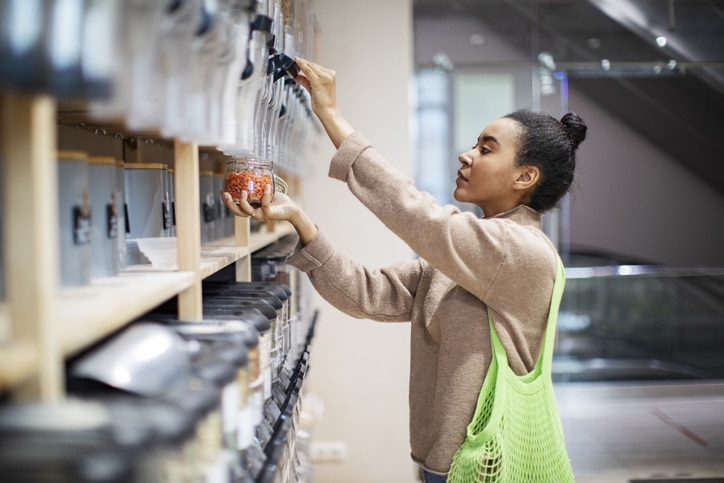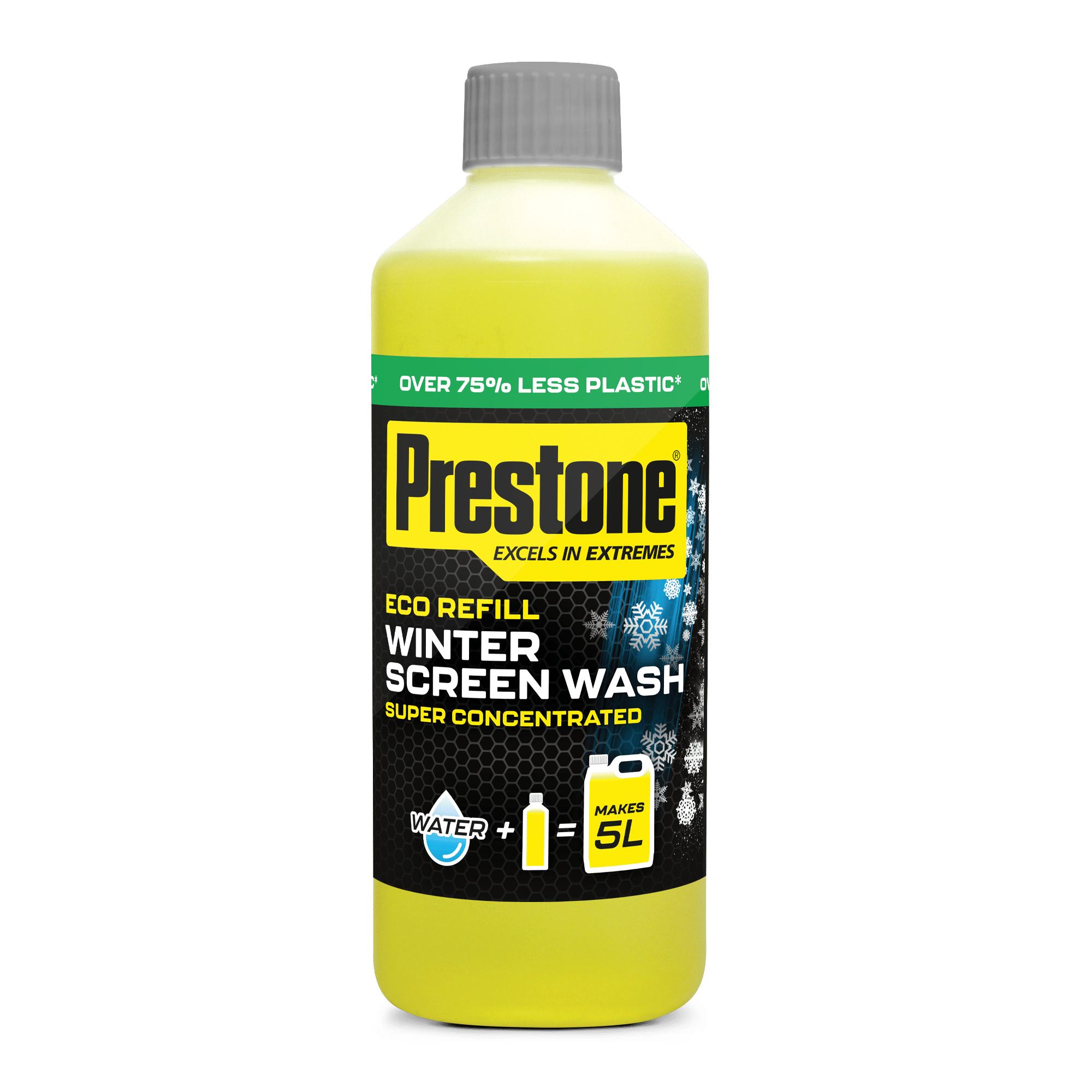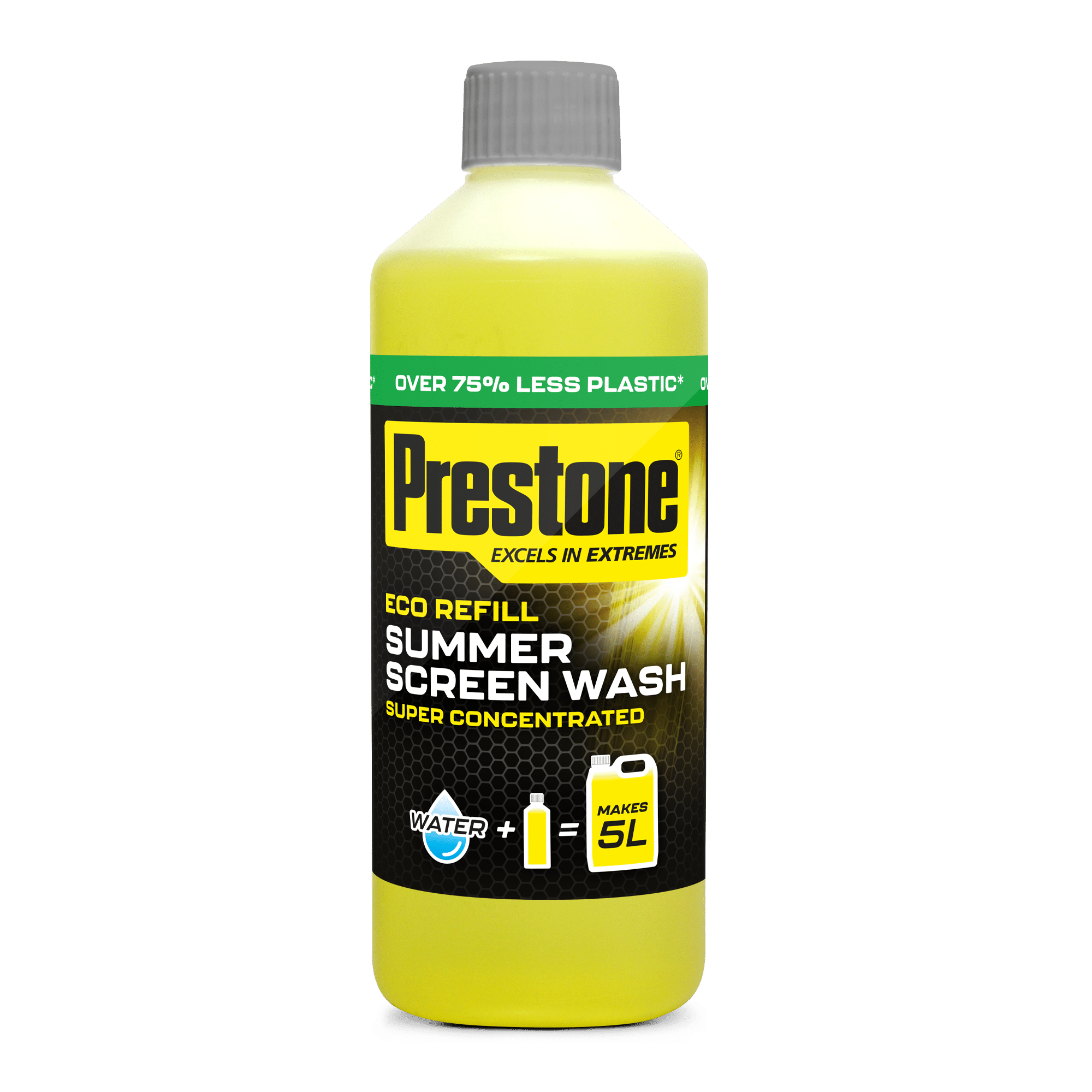Prestone Eco Refill is a super-concentrated screen wash that promises to slash the amount of plastic you use keeping your car topped up with screen wash this summer. Just one 500ml bottle of Eco Refill makes enough for 5 litres of summer-ready screen wash, helping to reduce plastic waste by an average of 75%.
Switching to Eco Refill is an easy way to cut down on the amount of plastic you use around the home and garage. And there are plenty of other simple swaps you can make to drastically reduce day-to-day plastic consumption, too. Here’s some inspiration that can help.
1. Find an alternative for cling film
Cling film may seem irreplaceable, but there are tons of alternatives available that are significantly less harmful. From tin foil to reusable beeswax wraps, swapping cling film for a plastic-free alternative is an easy change you can make to axe unnecessary plastic waste.
Plus, choose a reusable alternative, and not only will you be sending less plastic to landfill, but it’ll also save you money in the long term too – a win-win for the world and your wallet.
2. Learn some DIY basics so you can fix not throw
It’s fair to say that the UK has become significantly more disposal-prone in recent decades, with millions of tons of plastic products, tools and gadgets given over to the landfill each year. And of these items, many could be repaired, reused, or passed on to someone else.
If you’ve never been one for DIY, learning some of the basics could stand you in good stead to reduce plastic waste by repairing things rather than immediately casting them aside. The internet is your friend here, with thousands of how-to guides and videos helping you to repair everyday items.
3. Drink bottled water? Switch to filtered
In 2021, approximately 2.51 billion litres of bottled water were consumed across the UK. That’s an alarming amount of plastic that may or may have been properly recycled.
Prone to buying bottled water? Switching to a filter jug that you keep in the fridge is an easy and inexpensive way to cut down on those pesky single-use bottles.
[/vc_column_text][vc_single_image image=”4710″ img_size=”large”][/vc_column][/vc_row][vc_row][vc_column][vc_column_text]
4. Use refill points to cut out plastic waste
We don’t know about you, but we’re always shocked by the sheer volume of plastic that the average household accumulates from week to week. Cleaning products, cosmetics and food are still predominantly supplied in plastic, leaving you with heaps of the stuff to dispose of at the end of the week.
A great way to cut down on these day-to-day plastics is through the use of refill points. There are now plenty of options for refilling products rather than buying new, whether it’s pasta or laundry detergent. See what’s available in your local area and make the switch.
5. Ditch single-use disposable plastic – there are alternatives for everything
Further to the above point, there are now eco-friendly alternatives for almost every household product, so aside from the cost barrier, we should all be doing our bit to bring down plastic use. Tooth floss, deodorant, and food packaging – most everyday essentials now come in a plastic-free form, so clever swaps here and there can make a big difference in the volume of plastic your household consumes each and every month.
6. Avoid wet wipes in the home and workshop
Sure, wet wipes are a convenient way to keep your home, garage, and car clean, but most contain microplastics that are beyond harmful to the environment. As such, we should avoid wet wipes and replace them with liquid or solid cleaners where possible to reduce unnecessary plastic waste.
If you do need to use wet wipes, be sure to dispose of them in household waste and not down the toilet. The microplastics they contain are most harmful to aquatic life, so they’re safer disposed of in landfill.
7. Make use of old plastic tubs for all those DIY essentials
Screws, nails, bits, and bobs – there’s always something else that needs a home, so reusing plastic tubs is a great way to give them a second life and keep them out of landfill. Everything from margarine tubs to milk cartons can be used in the home or workshop, so if you have the space, it’s worth holding onto as many old plastic containers as you can. We guarantee they’ll come in handy somewhere down the line.
8. Buy in bulk and refill plastic bottles
One of the best ways to reduce waste is to refill and reuse the plastic containers you already have. For instance, perhaps you have a spray bottle of window cleaner that you use for your car; rather than disposing of it when it runs out, it’s much more economical to buy a bulk-sized bottle of window cleaning solution and use it to top up the spray bottle you already own.
By purchasing standard household and DIY cleaners in bulk, you’ll cut down on an incredible amount of single-use plastic waste. Just make you have a funnel handy to make topping up all those old bottles a breeze.
9. Offer feedback to your favourite brands
Do you often buy household goods and other supplies from a select few brands? Request less plastic or drop them a comment about how they could improve their packaging. This is worthwhile if you make repeat orders with smaller businesses, who may themselves be looking to save resources and cut back on plastic use. Customer feedback could be the thing to trigger positive change.
10. Switch to concentrated cleaning and maintenance products
Whether you’re buying orange squash from the supermarket or screen wash for your car, concentrated liquids are generally much more planet-friendly than their pre-mixed, ready-to-use alternatives. And this makes sense given that you’re effectively packing more of the good stuff into a single plastic container.
Take Prestone Eco Refill Screen Wash as an example. Rather than constantly buying large 5l screen wash bottles, you purchase a significantly smaller 500ml bottle and use the same large bottle over and over again. That’s a lot of plastic saved over the lifetime of your car.
Inspired to take a more proactive approach to cutting your plastic use? Prestone Eco Refill Screen Wash summer edition is a great place to start. Click here for more information or to find out where you can buy Eco Refill.


